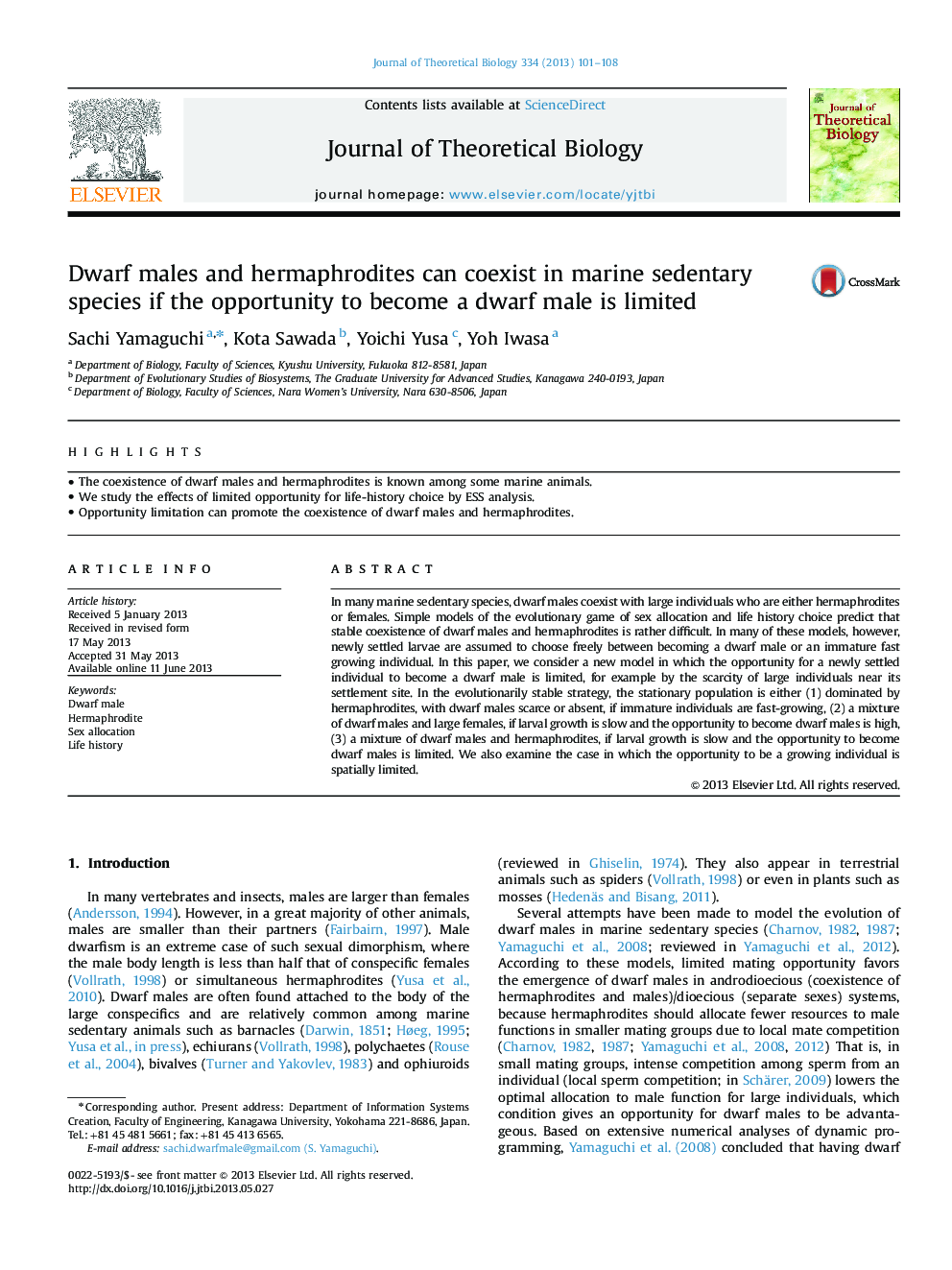| Article ID | Journal | Published Year | Pages | File Type |
|---|---|---|---|---|
| 6370864 | Journal of Theoretical Biology | 2013 | 8 Pages |
Abstract
In many marine sedentary species, dwarf males coexist with large individuals who are either hermaphrodites or females. Simple models of the evolutionary game of sex allocation and life history choice predict that stable coexistence of dwarf males and hermaphrodites is rather difficult. In many of these models, however, newly settled larvae are assumed to choose freely between becoming a dwarf male or an immature fast growing individual. In this paper, we consider a new model in which the opportunity for a newly settled individual to become a dwarf male is limited, for example by the scarcity of large individuals near its settlement site. In the evolutionarily stable strategy, the stationary population is either (1) dominated by hermaphrodites, with dwarf males scarce or absent, if immature individuals are fast-growing, (2) a mixture of dwarf males and large females, if larval growth is slow and the opportunity to become dwarf males is high, (3) a mixture of dwarf males and hermaphrodites, if larval growth is slow and the opportunity to become dwarf males is limited. We also examine the case in which the opportunity to be a growing individual is spatially limited.
Related Topics
Life Sciences
Agricultural and Biological Sciences
Agricultural and Biological Sciences (General)
Authors
Sachi Yamaguchi, Kota Sawada, Yoichi Yusa, Yoh Iwasa,
